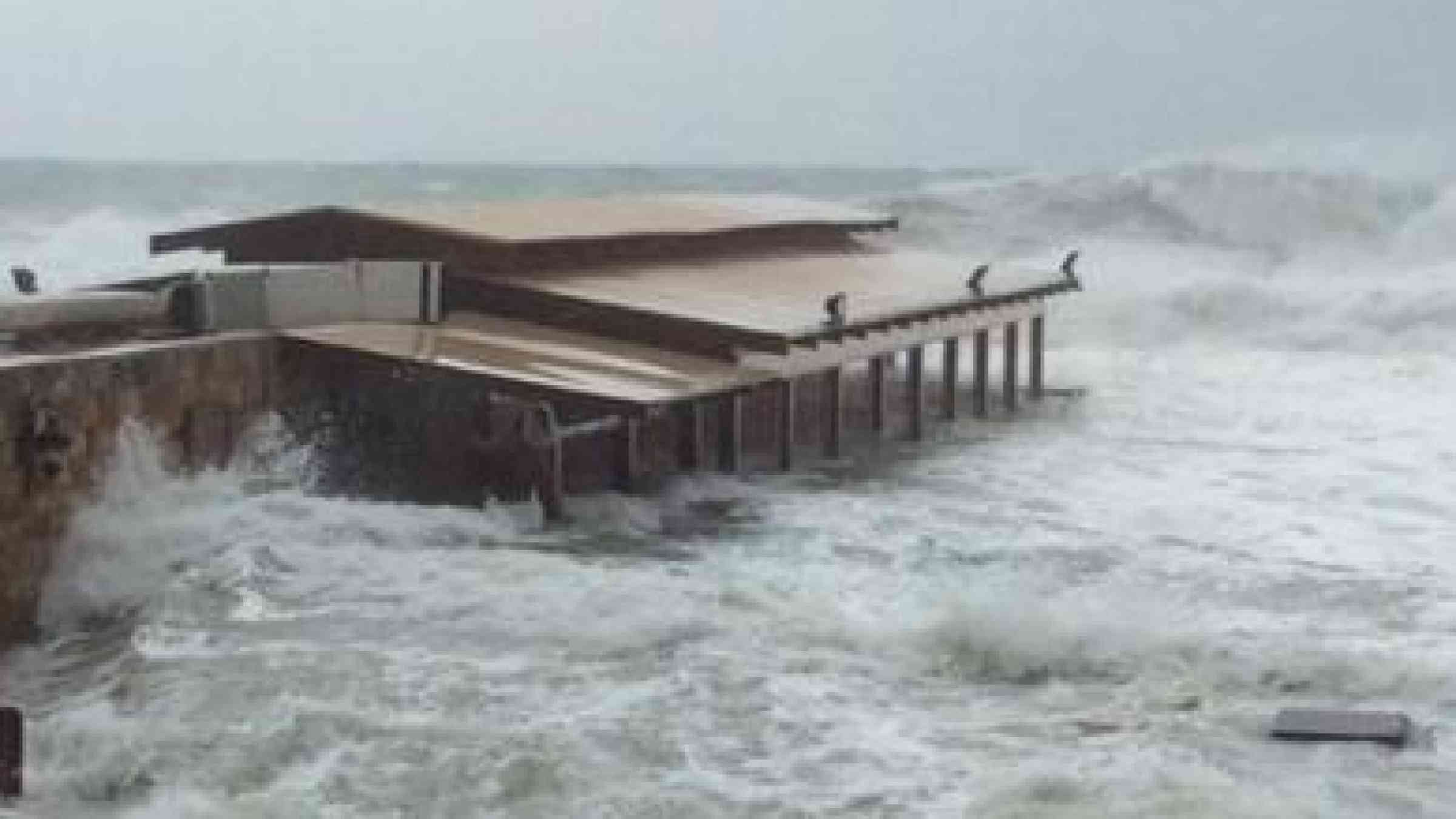UNDP: Lebanon’s storm preparedness helps response plan

A decade of efforts to better prepare and respond to disasters was highlighted when seasonal storm “Zina” struck Lebanon in early January 2015.
“We were waiting for this heavy storm to hit the country,” says Alexi Karim. “Throughout the year the local municipality came and conducted awareness sessions about earthquakes, tsunamis and flood preparedness, but I still didn’t expect the storm to be that heavy.”
Karim’s restaurant, in the town of Byblos sur Mer, was hit by flooding when the intense storm brought heavy snow and rain, as well as high winds and severe cold. While the restaurant itself was damaged, Karim is thankful that nobody was hurt and that damage was relatively minimal.
“This was not the first heavy storm to hit Lebanon, and I must admit I noticed this time that the whole preparedness and response system had really improved. Not only were the concerned agencies helpful, but also very well organized,” Karim added.
In the days after the storm, the Byblos municipality mobilized a team to assess the damages to Byblos sur Mer, as well as evaluate preparedness in the event that another storm struck. The assessment was carried out in part to determine reconstruction and recovery needs, as well as to reiterate the importance of stronger preparedness going forward.
“As one of the oldest inhabited cities in the world, we consider that it is our duty to preserve it and protect the city’s residents,” says Toni Sfeir, a member of the Byblos municipality.
Exposed to natural hazards, such as landslides, storms and earthquakes, Byblos has worked with the Lebanese Government to enhance disaster risk reduction in the area. Sfeir says that, following Zina, the municipality deployed a crisis disaster unit for the first time to support the local population. The unit is part of the Lebanese National Response Plan for disasters, which is a result of the partnership between the municipality and UNDP.
The response to Zina exemplifies Lebanon’s commitment to disaster risk reduction and its efforts to meet the priorities and goals of the Hyogo Framework for Action (HFA). Over the HFA’s ten-year period (2005-2015), Lebanon has strengthened disaster risk awareness by:
- carrying out emergency drills in cities and municipalities across the country;
- developed a website and mobile phone application that provide emergency information before, during, and after disasters; and
- conducted workshops that have built up disaster response capacity in all sectors, private and public.
Throughout this process UNDP has partnered with the Government and has helped integrate disaster risk reduction into national, sectoral and local development and planning processes.
“Disasters affect everyone and thus have to be everyone’s concern,” says Nathalie Zaarour, Disaster Risk Management Unit Project Manager at the Presidency of the Council of Ministers. “Lebanon is on track to build its resilience to disasters. Many future actions are planned that will continue to build up national capacities to prepare and respond to disasters, enhancing cooperation between all concerned agencies and stakeholders.”